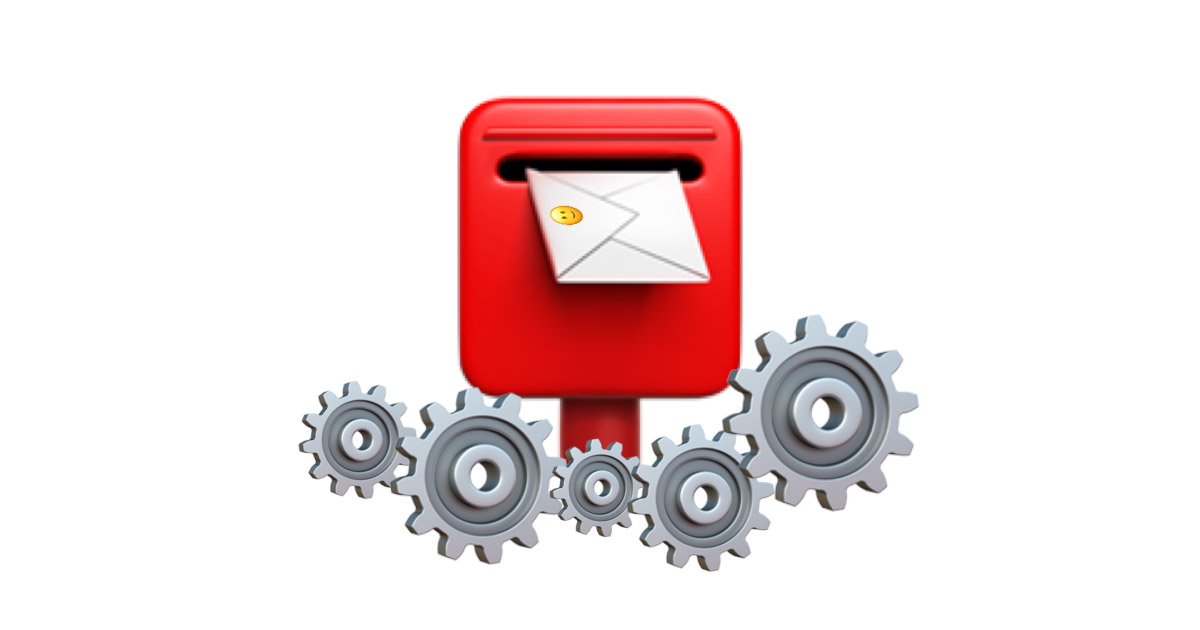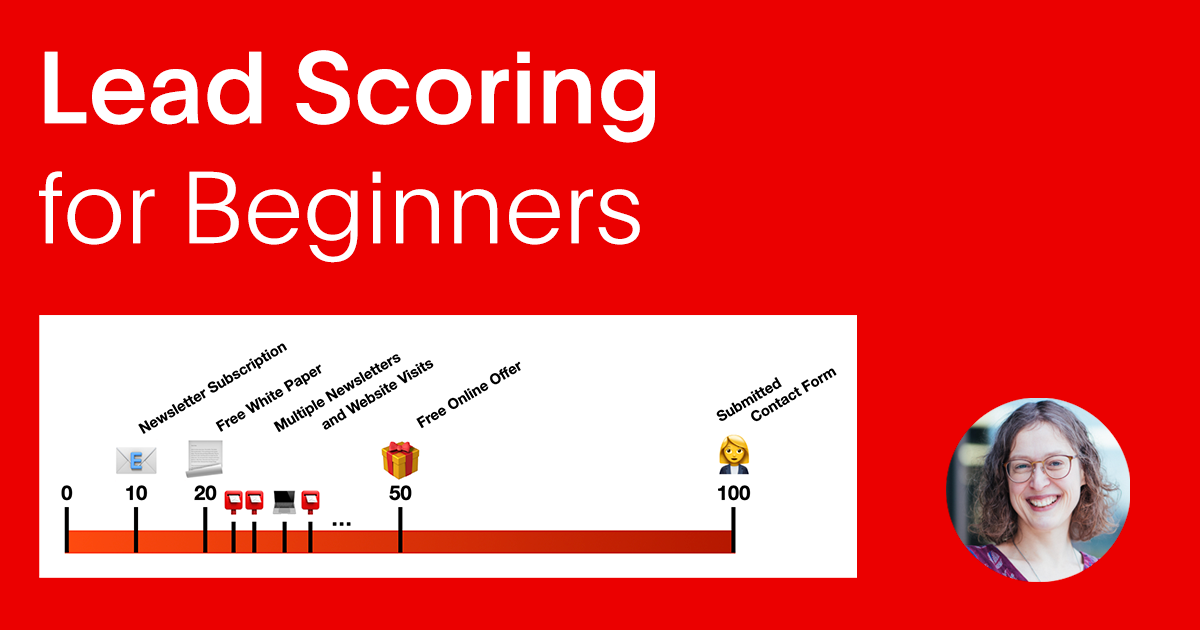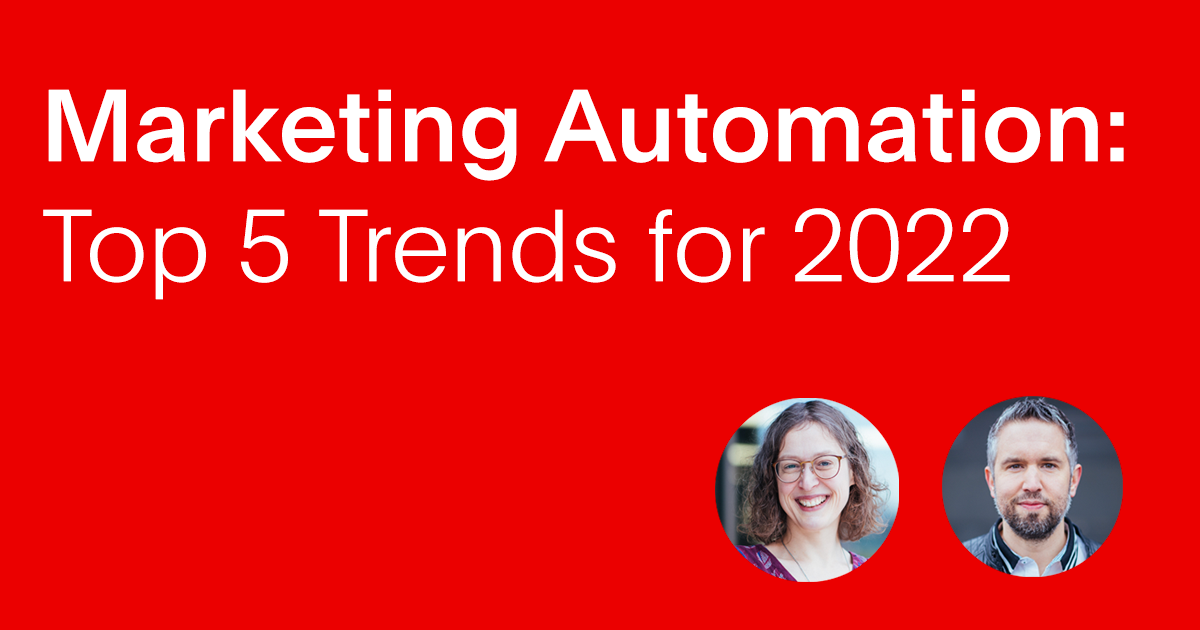For years we hear that email marketing is the tool with the most ROI for any company, no matter if you are large or small, if you are selling products or services.
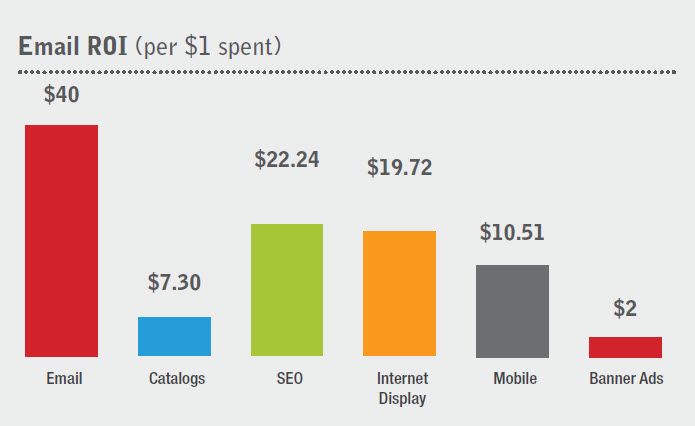
But in a world where everyone does email marketing, you need to stand out to make sure this claim stays correct.
Sending a static monthly/weekly/daily newsletter will not help you to build relationship with your customers. In fact if not done right, you might see a constant decline in the open rates leading to lower conversions. This can greatly hurt your ROI.
You can only build relationships with sending customised emails to your clients based on their actions, interest and stage of your relationship. You want to talk differently to a person that just checked out your website and a person who is already your customer.
I often hear – “But I’m already converting”.
Yes, you are grabbing all the low hanging fruits, but you are leaving money on the table. Most customers need more work, but you don’t have to work more – you can automate that.
This is where marketing automation comes in.
Marketing automation should mirror your manual sales process, it should be customised to your company. But there are 5 automation campaigns, that fit almost any business. And I would like to share them here:
Contents
1. Welcome To Our Great Business
If a potential customer walks into your brick and mortar store, you greet them, show them around and introduce your business in couple of sentences.
You can do the same thing during the welcome email campaign. Introduce your company, services in couple of sentences, offer solutions to problems, brag about your achievements, ratings. Let your customers know, that you are a great business, that cares about them.
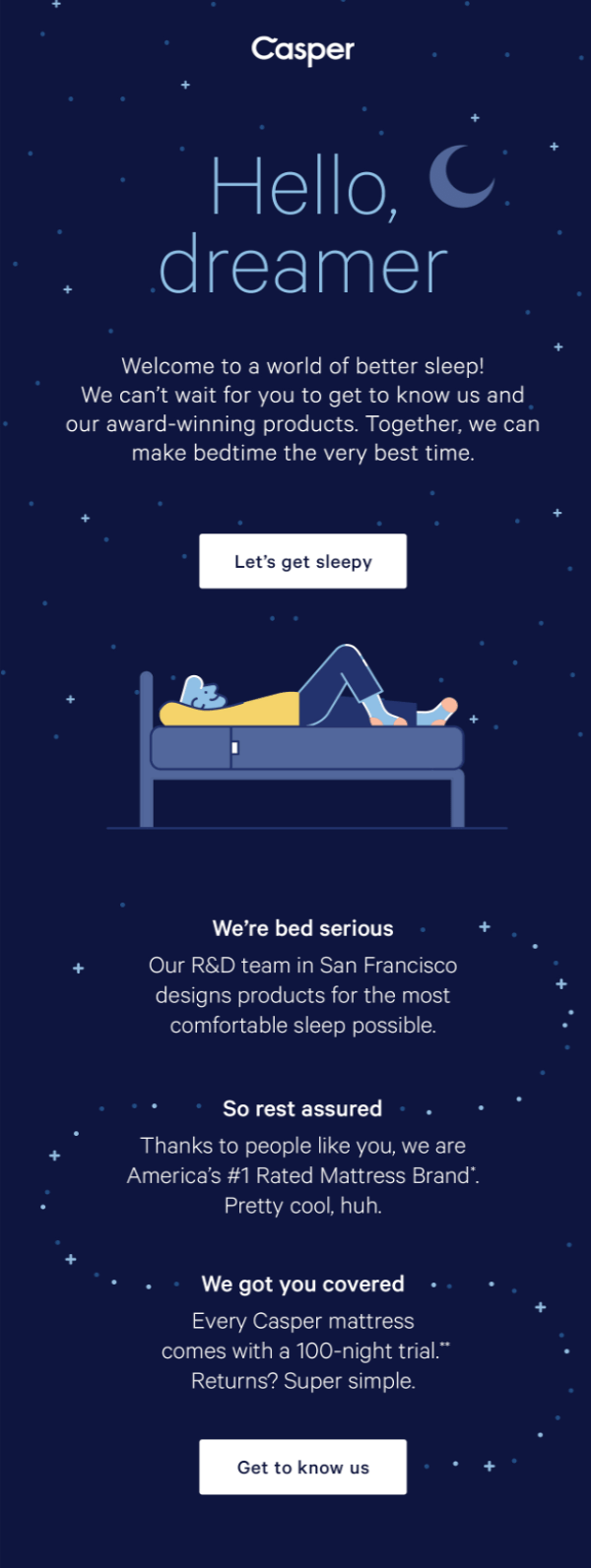
Another good strategy is to have a team spotlight with pictures and maybe bios. A look into behind the scenes, like:
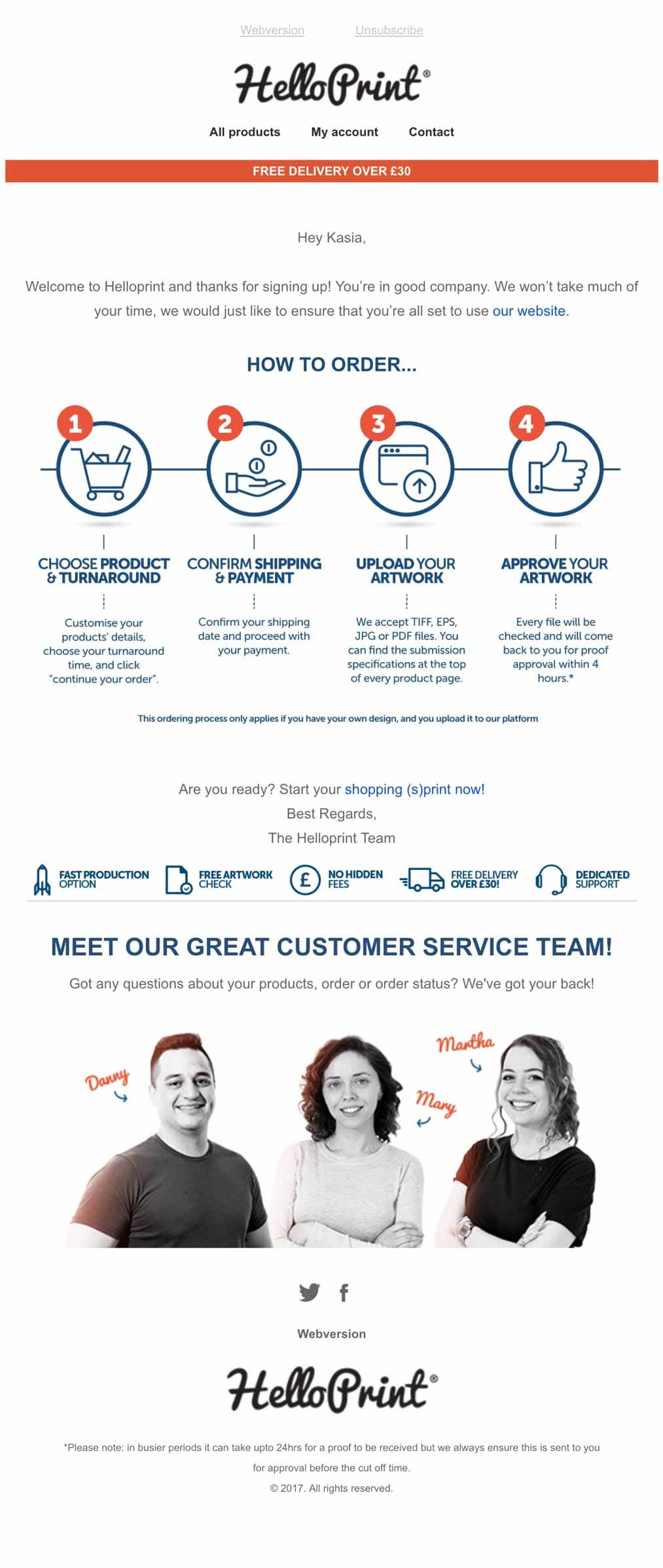
In the next welcome email you can see how Joe uses the chance of undivided attention from the subscriber, and deep dives into the brand story, and fires up ways to segment customers. More about this in the next steps.

2. Nurture Your Leads, Get Friendly
You have the opportunity to continue the conversation in multiple emails, unlike in a store, where the shop assistant can only say 1-2 sentences before over-annoying the clients.
While you discuss your products/services from different angles, you can monitor what wakes interest in your readers. You can build personas based on their interest and continue your lead nurturing accordingly.
Did you see what Joe did in the previous example?

By placing the two links into one sentence so close to each other, you are offering a choice to the customer. They will click on the topic they are interested in, and you can use this information of their interest for building out the persona of the contact.
You can set up a filter in your nurturing campaign, and create personas in an intelligent way.
Your personal building campaign would consists from these type of blocks:
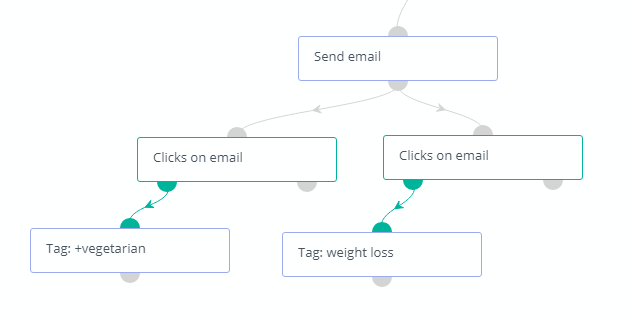
As you can see we are verifying two links in this example with a simple click-check:
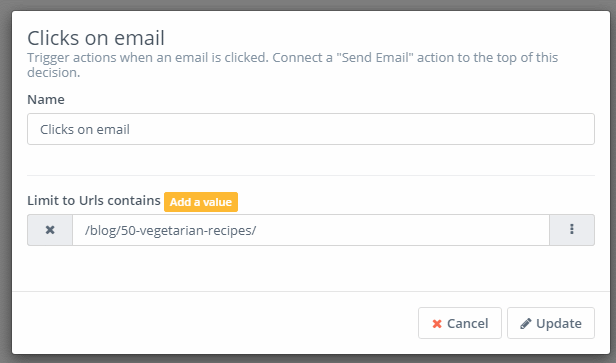
If the contact clicked on the blog article, in the next step we add the vegetarian tag to this contact. You can repeat this and add multiple tags of course.
This is how the tag is adjusted:
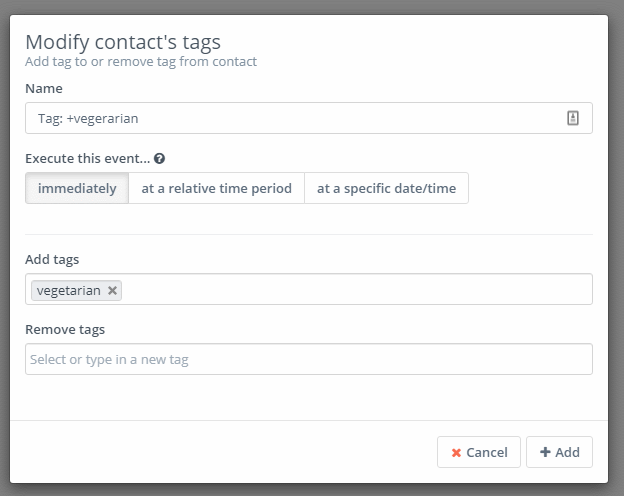
Building personas helps you to target better, as we will discuss in the next step.
3. First Purchase Campaigns
Once you mapped out what may trigger the sale for the potential customer, you can focus on that in your communication. Is it the price? The payment terms? A certain property of the product? Send the proper sales arguments automatically.
This is the campaign, where you can communicate special offers, while you exclude your current customers. Your goal is to turn your customers into first time buyers. Once you deliver something, you’ll have a special relationship and you can turn them into return customers easier.
Here is a first purchase campaign example by Bliss, where they took a seasonal item, combined it with the best sellers. All items were a bit discounted to push the customer to move something into the cart.
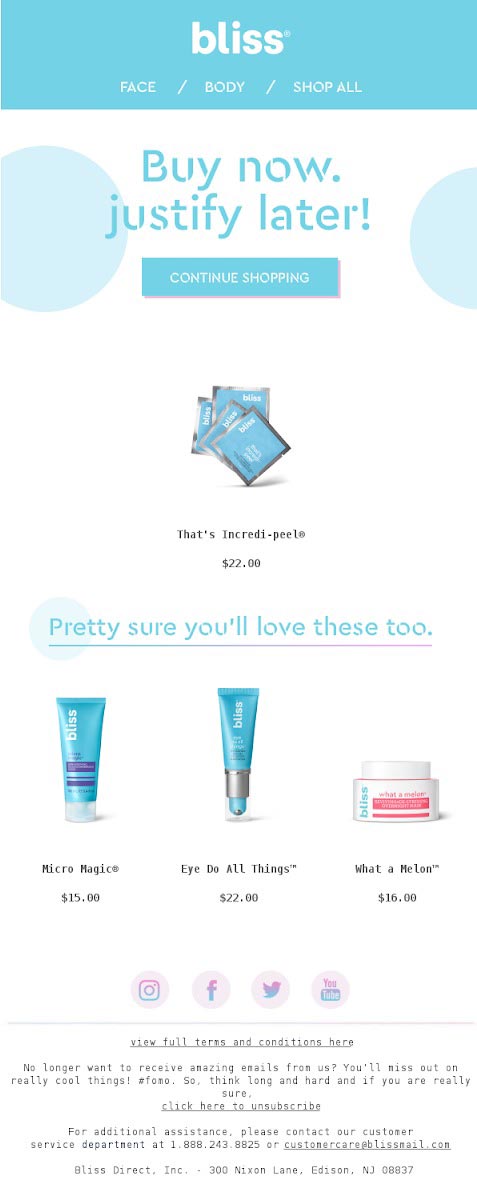
4. Recover Lost Sales
Adding a product or service to the shopping cart is a clear way to express willingness to buy. Visitors doing so most likely can be turned into paying customers. Like it or not, some visitors will not make the decision to buy something right away. The reasons can be different, like:
- review competitor’s pricing
- first want to search for coupons
- want to be sure, that you are trustworthy merchant
- looking for reviews
- need spouse’s approval
You can address all of these points in an abandoned cart campaign. And you should, because according to the Baymard Institiute, this rate can be up to 50%. Even if you can’t turn everything into a sale, but 10% of it would would result in a 5% growth. Not too shabby.
Also don’t forget of the added benefit: by monitoring what triggers the sale after abandonment can contribute to improving your sales process, which results in more conversion in the first place.
This example focuses on shipping costs:
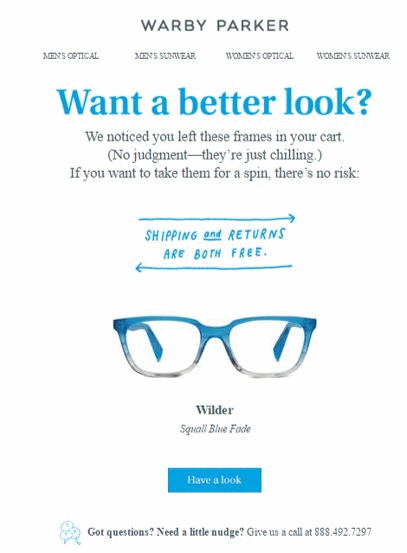
You don’t have to mention the product, it is not always the point. Once the customer liked you. They liked the personality your website reflected. You can try to appeal them the same way:

You can also throw an incentive on the table to address a price point:
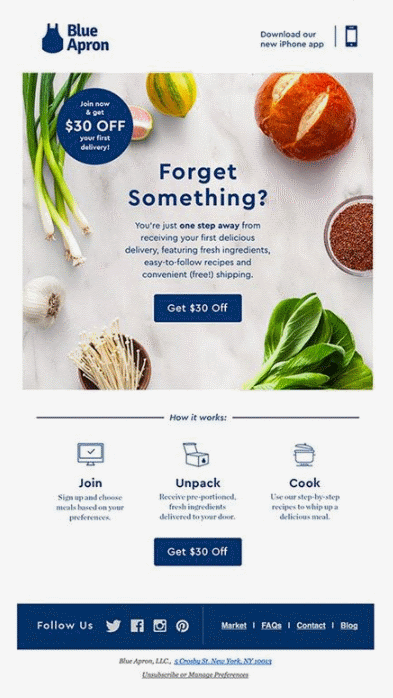
The following example focuses on all the possible issues why the sale is abandoned at once:

To make a campaign like this is easier than you think.
If you have a separate page for the step before payment (added to cart) and after successful payment, then you can set up an abandoned cart campaign easily. You can just filter for the specific page hits in Friendly Automate, or any other tool you are using.

Once you place clients in the abandoned cart segment, you can any time communicate with them.
You can address all issues the client might have in a sequence of emails:

Once the purchase is successful, they will automatically disqualify from the segment, and your communication will stop.
Again: you have the opportunity to handle return customers differently, make them feel they are special, and treat the accordingly. Sales automation is not built for a sprint, it is helping you during a marathon.
5. Ask for a Review
Reviews are underestimated sales tools. In the world of anonymity, where it takes literally 5 minutes to spin up a web shop or create a sales page – legit reviews are the way to get ahead of your competition.
These reviews will help you to stockpile ammunition for your welcome series, increase your ranking, get more leads and strengthen the relationship with your customers.
Couple of rules apply:
- They are doing You a favour. So keep it simple and make the review process fast and painless.
- Use the communication to build your brand. You can ask for review and land a message at the same time.
- Give them a small reward. You’ll get better response rate if you do so. You can create rewards which can be used for their next purchase, which generates extra income for you.
See the following example by CourseHorse:
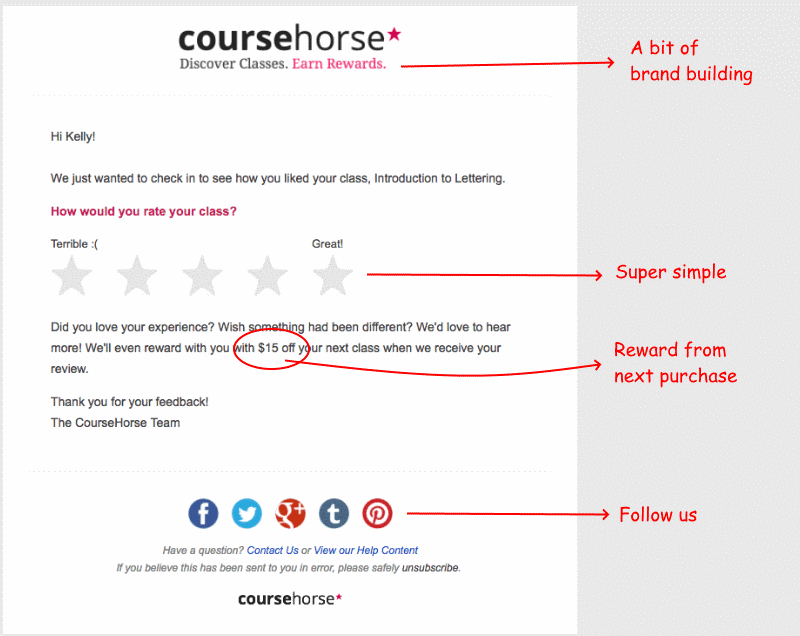
Conclusion
Automation Is About Harvesting the High Hanging Fruits
If you have ever harvested apples, you know, that the top of the tree is the place where all the juicy ripe stuff is. Whoever brings the first ladder to the tree will have the opportunity.
The above mentioned automation examples help you to build a more intelligent business by reaching out better, lower churn rate, raise the number of purchases per visitor, raise basket value and build loyality.
You Are Using Automations Already
I bet you have out of office message set up, canned responses in Gmail or Outlook.
The initial investment into marketing automation used to be high, now there are tools, like Friendly Automate, which lowers the cost of entry dramatically.
And it got super-easy too: it doesn’t have to be more complicated than setting up a canned response or setting up an out of office message.
Want to have more examples?
We can get them to your inbox.
All automated.
Friendly in your inbox? Sign up for our newsletter.
